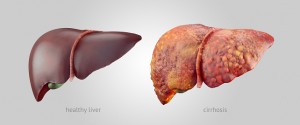Confused About Fat Free-Foods? Revealing Answers
“Have another cookie. Go ahead, they’re fat-free.” Have you ever succumbed to such logic? Modern science has brought us many blessings. The internet. Strides in medicine. But are fat-free variations of your favorite foods really a modern miracle? Can you really have your (fat-free) cake and eat it, too?
It was back in the 1990’s that the food industry started creating reduced-fat and fat-free variations of their products. Today, more than 90% of American adults are consuming these new variations, including milk, cheese, salad dressings, potato chips, mayonnaise, margarine, ice cream, and frozen desserts. There is no question these products are popular, but do they make a difference for someone who is trying to lose weight, someone like you?
First thing that needs to be said is these products are fat-free, not calorie free. If you are consuming more calories than you are burning, you will gain weight, even if you are eating fat-free products. Fat-free and low-fat products aren’t necessarily lower in calories. Take a look at these examples:
Peanut Butter – serving 2 tablespoons
Regular: 190 calories, 16 grams of fat
Reduced Fat: 180 calories, 12 grams of fat
Fig Newtons – serving 2 cookies
Regular: 110 calories, 2 grams of fat
Fat Free: 100 calories, 0 grams of fat
Yogurt – serving 6 ounces
Regular: 165 calories, 6 grams of fat
Low Fat: 175 calories, 2 grams of fat
Notice the difference in the yogurt. How can the low-fat variety have more calories than the regular variety? In order for low-fat and fat-free products to still taste good, many times they will contain more sugar than the regular variety. More sugar, more calories.
This is disturbing when you consider that in the last 20 years, we have increased sugar consumption in the U.S. by 26 pounds, to 135 lbs. of sugar per person per year! That means the average American consumes an astounding 2-3 pounds of sugar each week. We all know sugar is not good for us but take a look at some of the health risks that can come from consuming sugar:
• can suppress your immune system and impair your defenses against infectious disease
• can produce a significant rise in total cholesterol, triglycerides and bad cholesterol and a decrease in good cholesterol
• contributes to obesity
• can cause gallstones
• can contribute to osteoporosis
• can increase your systolic blood pressure
These are just some of the health risks I found when I searched the internet. Not to mention the rise in diabetes and metabolic syndrome.
The real danger of these fat-free varieties is that they give a false sense of security. Most people consider consuming the reduced-fat or fat-free varieties of their favorite foods as a healthier choice. How many times have you reached for another cookie, thinking it’s ok, they’re fat-free? Or when making a sandwich, have you ever spread the mayonnaise a little thicker because, hey, it’s fat-free? Fat-free creates a mindset that there’s no harm, so it’s ok to have more.
It’s not. Calories are calories. Take a look at the calorie count of the Fig Newtons. Two cookies have 100 calories. One hundred calories may not seem like much, but an extra 100 calories a day becomes an extra ten pounds in the course of a year.
The irony is that today, Americans are eating less fat than they used to but obesity is widespread. Cutting out fat intake means nothing when one eats ten fat-free cookies at a time. The fat-free trend is having no impact on health or waistlines. Start reading the packages of your reduced-fat and fat-free products. Make informed decisions. And, remember, calories are calories even if they’re fat-free ones.
-
Can We Think Ourselves Slim?
There is no doubt that the mind can affect the body. You only
-
Simple Strategies To Help You Figure Out What Diet And Fitness Programs Are Legitimate – Miscellaneous Tips Revealed
Want to get healthy soon? Sure you do! Diet and fitness programs are a
-
Simple Steps To Stop Eating So Much And Curb That Uncontrollable Appetite
More often than not, most of us seem to eat out of craving and habi
-
Put the Brakes on Menopausal Weight Gain
Turn mean-o-pause into a time of body beauty with these nine tips.
-
The 3 Keys To A Flat Stomach Fast
Everyone wants to get a flat stomach fast and no matter what it t
-
How to Lose 10 Pounds Quickly?
How to lose 10 pounds? You have probably asked yourself this before. I
- DON'T MISS
- Your Child Has Diabetes
- You Can't Go Head-to-Head With The Food
- Lose Weight Quickly And Enjoy Your Success
- Tips About How You Can Lose Belly Fat
- Sustainable Weight Loss Requires Proper Planning
- Best Fat Burners
- Maintaining Your Motivation For Natural Weight Loss
- A Way Healthy Method to Fast and Lose Weight
- Hoodia Gordonii Weight Loss Miracle Or Diet Deception
- Obsession With Food — and Other Reasons Why Diets Don’t Work




